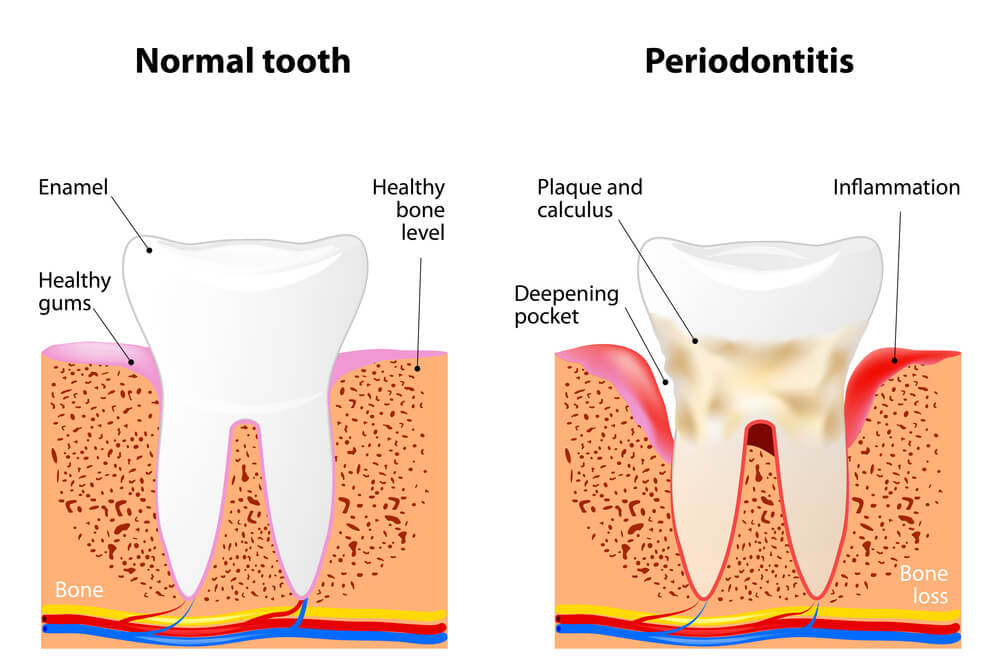
Sometimes, periodontal surgery may be needed to treat certain gum diseases and conditions, such as gingivitis or periodontitis. This type of surgery is commonly known as gum surgery.
The procedure aims to treat the gum disease and any damage it may have caused by:
Which kind of surgery a dental surgeon performs depends on the type and severity of the gum disease.
Before surgery, a dental surgeon might give the gums a deep clean. One procedure known as deep scaling can remove tartar and bacteria from teeth and gums.
Another procedure known as root planing can smooth the surfaces of the roots of the teeth, meaning that there are fewer places for tartar and bacteria to build up. This procedure also removes any tartar that is on the root.
Deep scaling and root planing usually occur at the same time.
Flap surgery is especially helpful for people who have tartar deposits in deep pockets. The procedure involves lifting the gums off of the teeth to remove tartar buildup.
After the surgeon has cleaned the area and removed the tartar, they will stitch the gums into place to fit around the teeth. Sometimes, the bone may require reshaping during this procedure.
When the bone that surrounds the root of the tooth is damaged or destroyed, a person may need a bone graft. This procedure involves replacing the damaged bone with new bone. This bone may be the person's bone, a manufactured bone, or donated bone.
The goal of bone grafting is to hold the tooth in place and help it to regrow.
During this procedure, a dental surgeon will place a small piece of mesh-like material between a person's bone and gum tissue.
The material prevents the gum from growing into space where bone should be, allowing the bone and connective tissue to regrow.
A lowered gum line, known as gum line recession, is caused by the loss of gum tissue and may require soft tissue grafting to reduce the risk of further damage.
During this procedure, a dental surgeon typically removes tissue from one part of the body and re-attaches it to the area where the gum has receded. The tissue often comes from the roof of the mouth.
Tissue grafting not only reduces the risk for further damage but also covers any exposed roots.
Other treatment options include:
Copyright © All Rights Reserved, By Aastha Dental Clinic